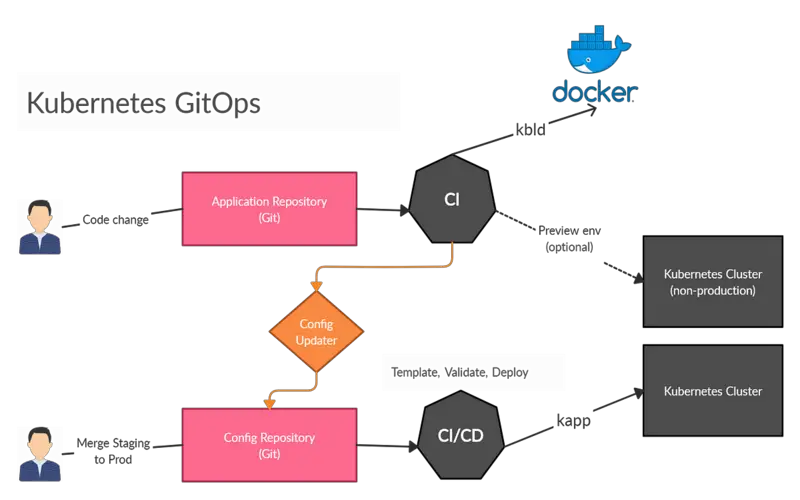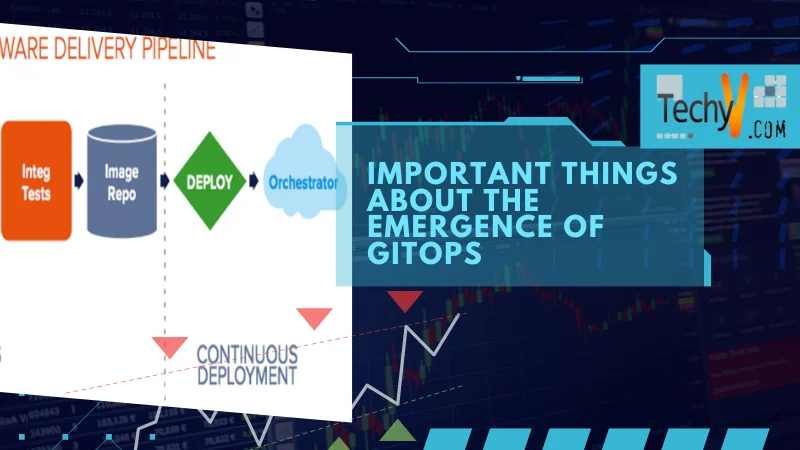What Is GitOps?
GitOps is a functional structure based on DevOps practices, like consistent integration continuous delivery (CI/CD) and adaption and organized software employment. It allows programmers to preserve the preferred state of their structure and use it to automate operational procedures. GitOps is the best practice applicable from the start of the development workflow to deployment.
GitOps is a programmer-centric reach, depending on devices programmers are already familiar with. GitOps can be pre-owned to organize deployments for any structure. It is beneficial for software developers and platform engineers who work with Kubernetes and want to move forward with consistent deployment for cloud-native applications.
How GitOps Works?
GitOps uses a Git repository as a single source of trust to send infrastructure as code (IaC). Code converts are traced, which offers a version handle if a rollback is required. Once asserted in Git, a GitOps agent is preowned to request all code configurations automatically in growth, test, offering, and formation environments.
GitOps is based on the scheme of pull requests. Once a pull request is activated, the consumer can see an overview of converts in each branch in the depository base. The consumer can then add an abstract of proposed converts, review changes, add labels, and mention other distributors. After the pull demand is formed, an execute from a topic brand can be added where distributors can view any planned converts. Once everyone confirms the market, the converts are combined with the pull request.
GitOps Benefits
The underlying Git rule is not resource-concentrated and is open source. It provides the following extra benefits:
- We maximized productivity through the support of CD and employment.
- Flexibility and security through declarative states versioned preserved, consistent state identification, revert and rollback, and fork characteristics.
- Organized workflows centered around Git.
- A single set of devices.
- A minimizes the number of potential variables in structured organizations.
- Visibility and a clean change history.
- Smaller energy attack surfaces.
1. V For Versioning
Declarative describers preserved within the depository assist stability, versioning, and versioning history. For instance, using Git for the statements mentioned above enables you to find a particular place from which everything for your application is obtained and driven. It allows you to pinpoint any converts made at any time simply. What is the difference between two surroundings by hand? It converts found in version control history, having the guarantee that the platform always contests what is described there.
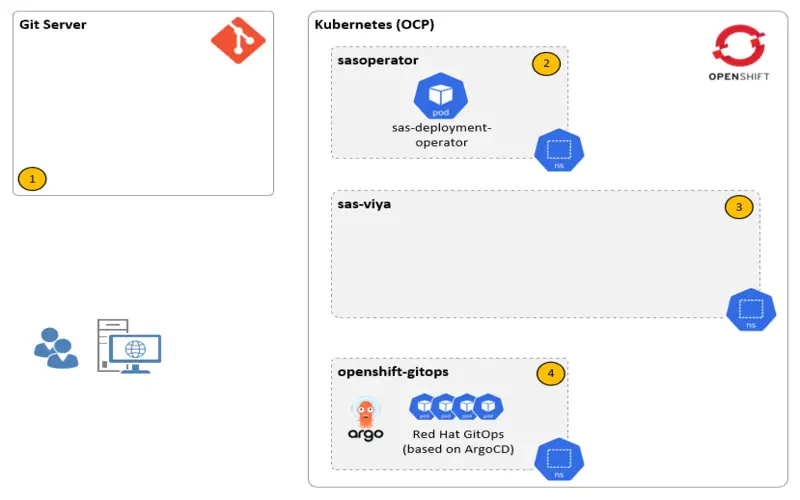
2. Auto-Pull
Using GitOps entails deploying faulty software that always starts in the group, automatically dragging the Git state at daily intervals, and validating it against the live group status. This path always indicates whether the version in Git is the same as the live state or not.
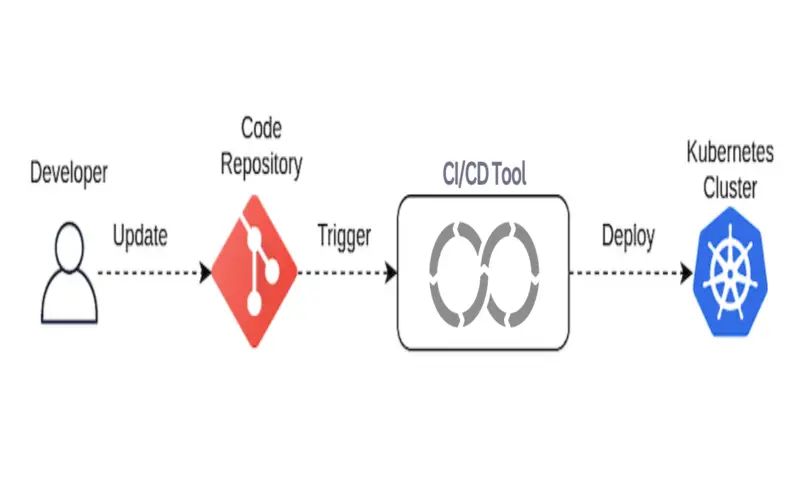
3. Easy Structure Management
Like the DevOps SDLC workflows, it is executed using Git and CI/CD pipeline. It assists in making converts simply to the structure. You can merge and review the structure positive code with the team, acquire essential permissions, or troubleshoot, audit, and roll back (if required).
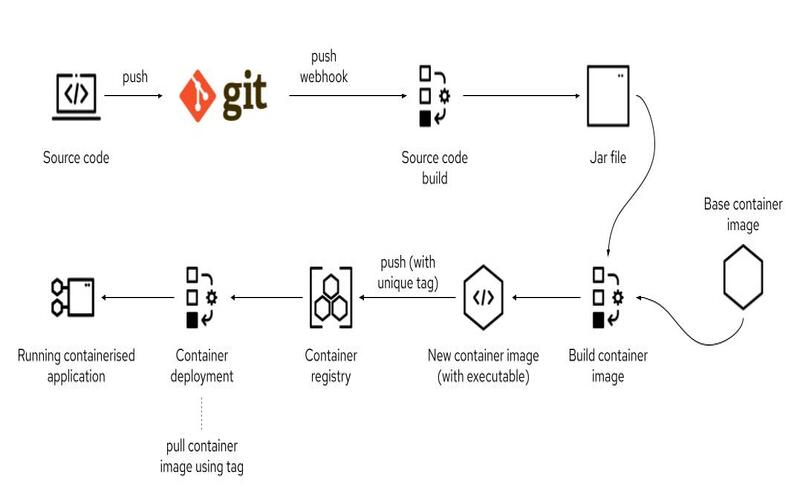
4. Repository
The repository catches the source of trust of the system. It could be the entire system or part thereof. Involve elements such as rules that define how the array should be running, devices that expand how the variety performs, and end-user/business applications.

5. Git Holds The Canonical System State
The statement of the system stored in Git is always the approved desired system. If the formation statement ever deviates from the Git version from which everything is decided and driven, an alert is raised. If a rollback is essential, a simple Git return reinstates the correct system statement. Git’s robust protection means SSH keys can be pre-owned to sign commits, so the authorship and origin of code are always tacked.
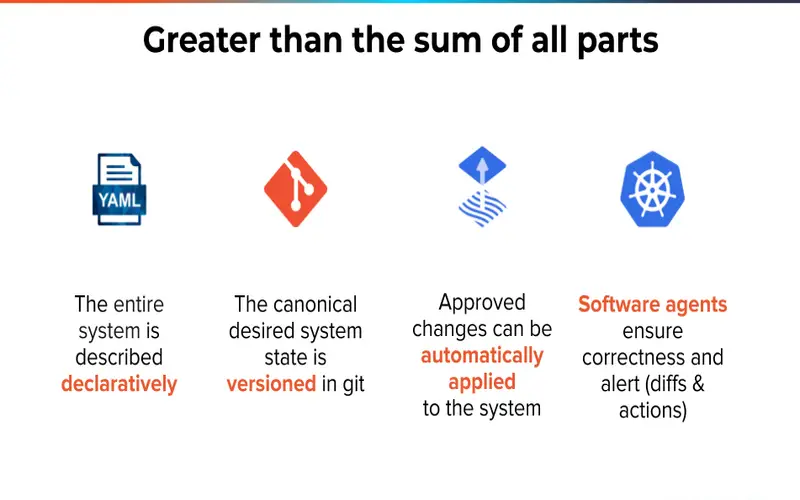
6. Automation Of Approved Changes Deployment
With Git as the statement states the formation array must precisely reflect, and converts to the state can be automatically employed. Array credentials are not required for system converts because the state definition exists outside of the formation surroundings in Git. So, GitOps enables the division of what is being done and how it be done.
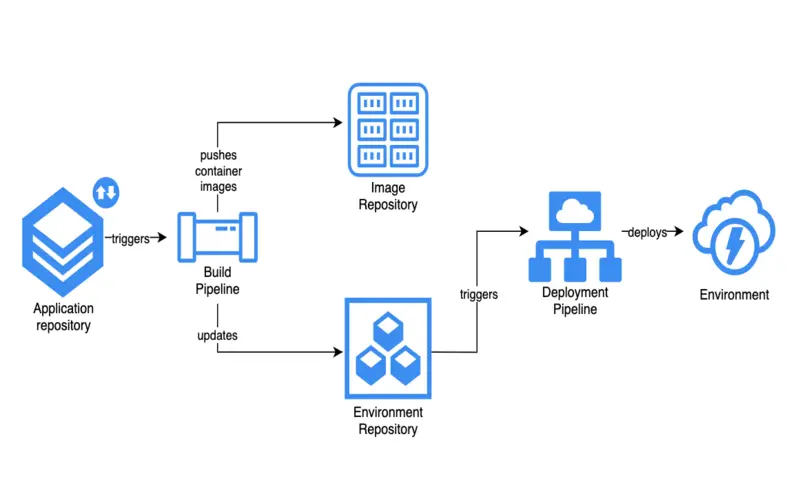
7. Software Agent’s Alert If Divergence
If the reality of the formation array does not announce system software, agents can send an alert. It enables self-helping across the system, involving in the case of human concerns agents provide the consistent feedback and control loop at the centre of GitOps.
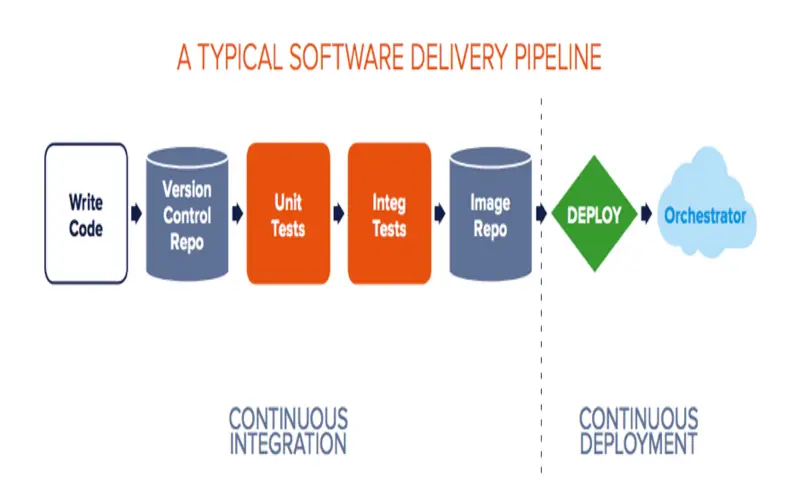
8. Declarative Structure
It enables software development groups to concentrate on application development, as opposed to manually controlling the logistics of employment and trading with enormous runtimes. The declarative nature of GitOps means configurations can be inscribed as a set of facts directly within source code in Git as a “single source of truth.” The approach is forecasted around how the system can be pre-owned to seamlessly succeed in the deliberate desired state without being overloaded with manual errors. If issues or mishaps occur, apps can easily roll back.
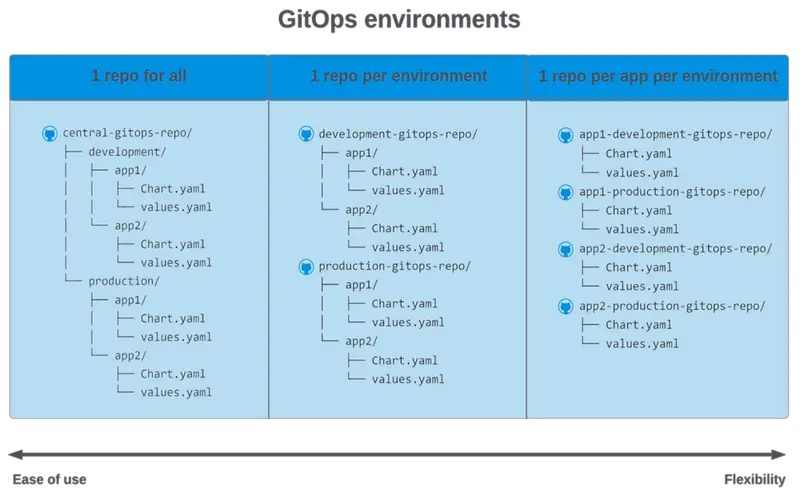
9. Maximized Deployment Speed And Frequency
Employment automation, along with a combined mechanism for cooperation and feedback, can highly maximize the speed and frequency of employment. Eventually, it ensures that more petite converts get moved and tested often rather than waiting for a whole to be transferred to sample and observe converts. Troubleshooting also becomes simple since smaller converts are simply to reason about and roll back if there is a difficulty.
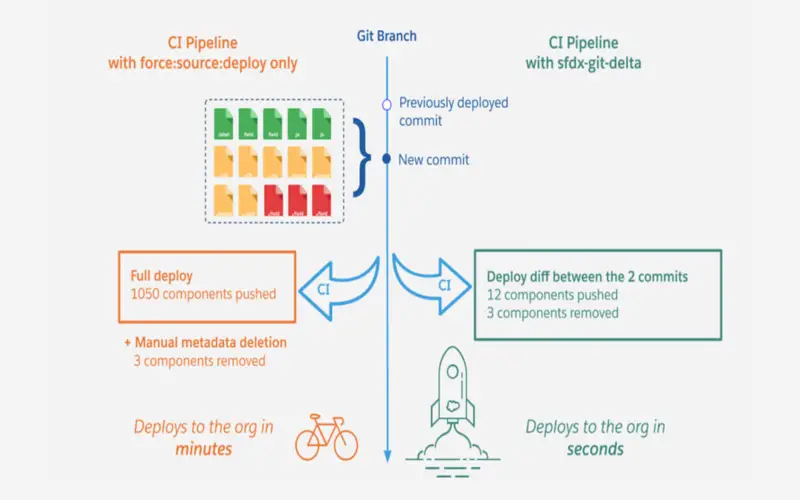
10. Controlled Workflow
A controlled workflow is one of the foundations of any GitOps procedures. It generally involves a workflow system, such as Jira or Gitea, that traces your code from its institution to its sends. The controlled workflow is responsible for tracking code commits, issues, and dependencies. When you have all of this information, it is much easier to send the latest features and handle any difficulties that arise.
